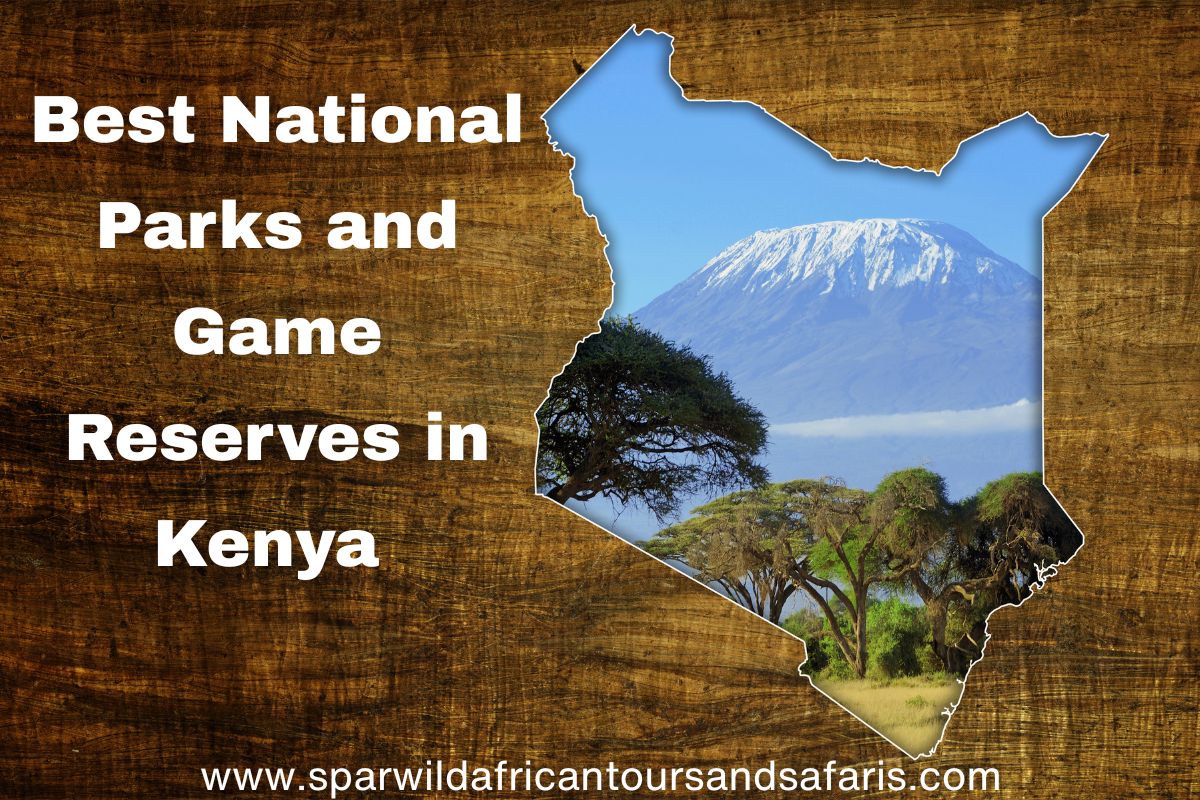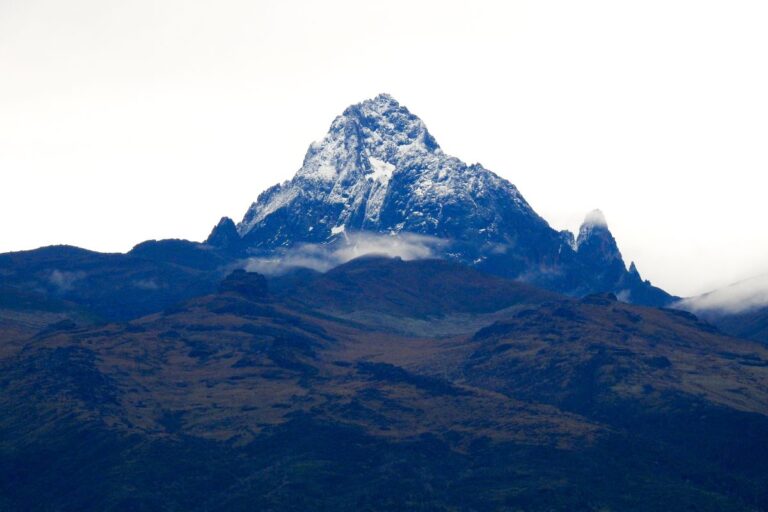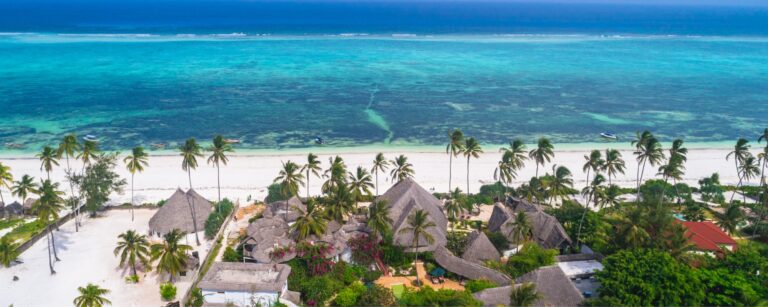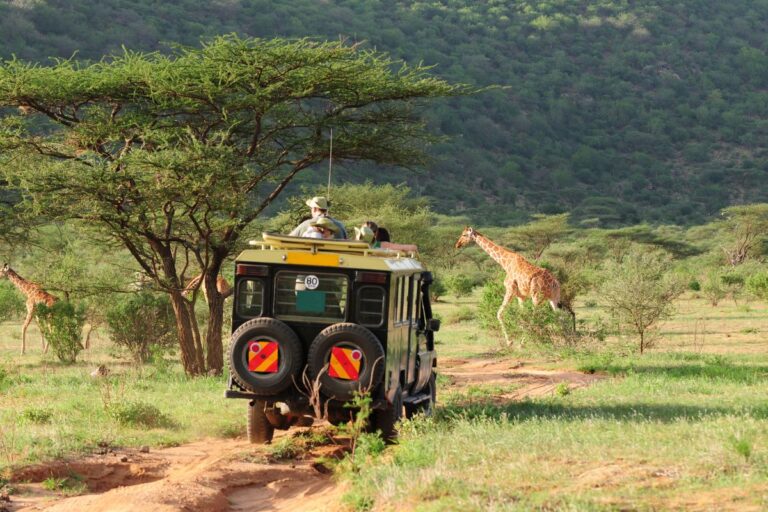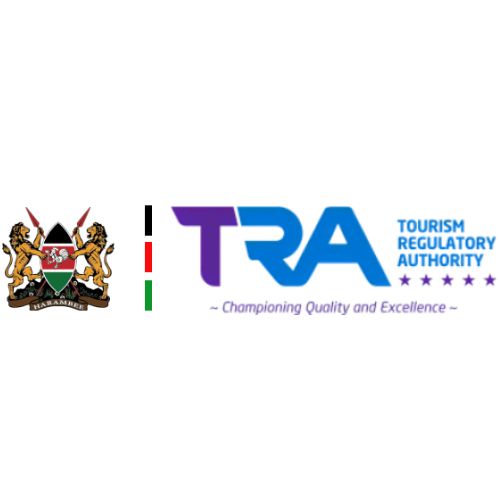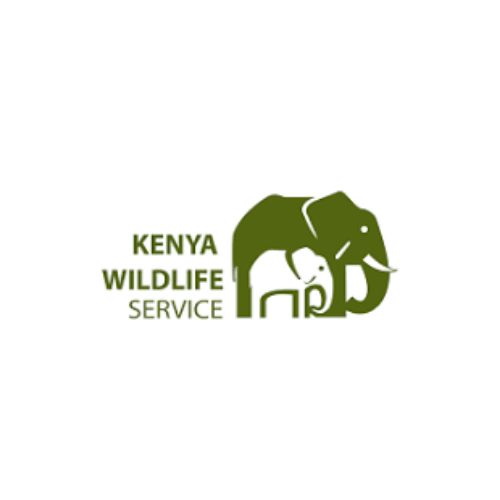Best National Parks and Game Reserves in Kenya You Must Visit
Best National Parks and Game Reserves in Kenya
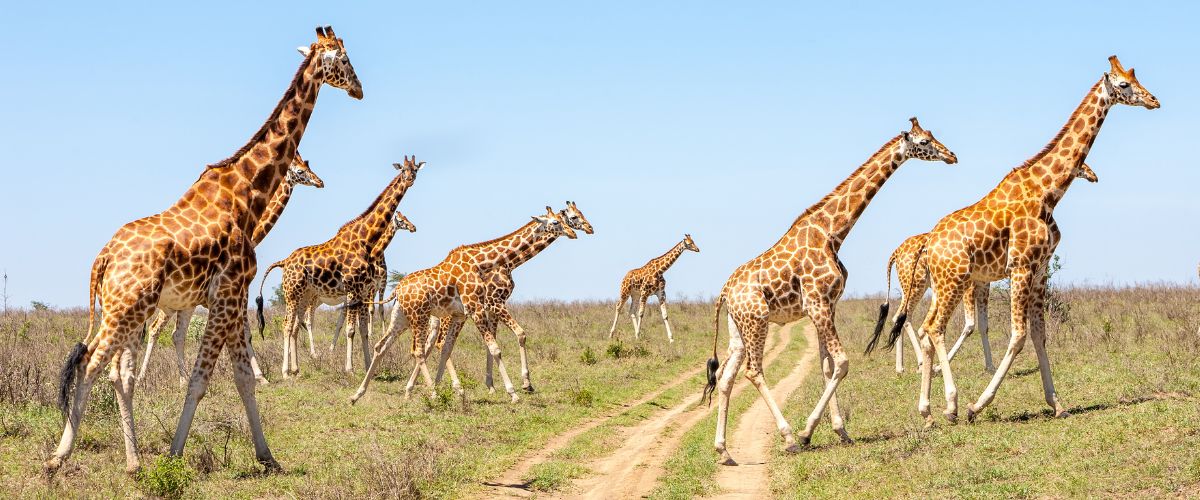
Experience the Best National Parks and Game Reserves in Kenya with expert insights from Sparwild African Tours & Safaris. Discover Kenya’s most breathtaking wildlife destinations, from iconic savannahs to hidden marine treasures — a complete guide designed to help you plan the perfect safari adventure across every region of this diverse African paradise.
Kenya protects more wildlife per square kilometer than almost any other African nation — yet most travelers only ever visit two or three of its parks. This blog reveals the Top National Parks and Game Reserves in Kenya, showcasing the full spectrum of its 23 national parks, 28 national reserves, and 4 sanctuaries that safeguard more than 8,000 plant and animal species. The challenge for many safari-goers is navigating the sheer diversity of Kenya’s ecosystems — from the Big Five plains of the Masai Mara to the flamingo lakes of the Rift Valley and the coral-rich shores of the Indian Ocean. By unpacking each destination’s highlights, wildlife experiences, and travel advantages, this guide eliminates guesswork and helps you design an itinerary that matches your adventure goals and budget. Drawing on expert insights from Sparwild African Tours & Safaris, it positions you to experience Kenya not as a tourist — but as an informed explorer of Africa’s most diverse conservation landscapes.
Top National Parks in Kenya
Kenya’s National Parks are the beating heart of Africa’s wildlife heritage — a network of breathtaking landscapes that stretch from the snow-capped peaks of Mount Kenya to the golden plains of Tsavo. According to the Kenya Wildlife Service (KWS), the country hosts 23 officially designated national parks, each offering distinct ecosystems, species diversity, and visitor experiences. Yet, for travelers and planners, navigating this vast array can be overwhelming without a clear understanding of their geographical and ecological grouping. To simplify your journey and help you plan strategically, we’ve categorized Kenya’s national parks into five key circuits — Northern, Central, Eastern, Coastal, and Western. Each circuit tells a unique story of Kenya’s natural beauty, wildlife conservation, and adventure tourism potential.
- Southern Circuit
- Central Highlands Circuit
- Rift Valley Circuit
- Western Circuit
- Northern Circuit
- Coastal Circuit
The Southern Circuit stretches across Nairobi, Kajiado, Makueni, and Taita Taveta counties, forming one of Kenya’s most accessible and wildlife-rich safari regions. From the open plains of Nairobi National Park to the elephant herds roaming beneath Mount Kilimanjaro in Amboseli, this circuit delivers iconic safari experiences. Visitors can also explore the volcanic landscapes of Chyulu Hills and the vast wilderness of Tsavo East and West.
National Parks within the Southern Circuit include:
Nairobi National Park
Amboseli National Park
Chyulu Hills National Park
Tsavo East National Park
Tsavo West National Park
The Central Highlands Circuit lies within Nyeri, Kirinyaga, Embu, and Kiambu counties, offering cool high-altitude terrain covered in dense forests and misty peaks. It’s ideal for those seeking mountain hikes, scenic waterfalls, and rare alpine wildlife. The region’s parks protect some of Kenya’s most pristine montane ecosystems.
National Parks within the Central Highlands Circuit include:
Aberdare National Park
Mount Kenya National Park
Ol Donyo Sabuk National Park
The Rift Valley Circuit runs through Nakuru, Baringo, and Naivasha regions, forming a dramatic landscape of escarpments, volcanic craters, and soda lakes. It’s world-famous for birdwatching, adventure travel, and geological wonders. This area perfectly combines nature, culture, and photography opportunities.
National Parks within the Rift Valley Circuit include:
Hell’s Gate National Park
Mount Longonot National Park
Lake Nakuru National Park
Located in Kakamega, Kisumu, and Bungoma counties, the Western Circuit is Kenya’s lush, green escape — tranquil and rich in biodiversity. It’s best known for rainforest ecosystems, scenic hills, and the country’s rarest primates. This region appeals to travelers seeking authentic, less-crowded natural experiences.
National Parks within the Western Circuit include:
Ruma National Park
Mount Elgon National Park
Saiwa Swamp National Park
Covering Marsabit, Turkana, Isiolo, Garissa, and Meru counties, the Northern Circuit represents Kenya’s rugged, arid frontier. It features prehistoric sites, desert wildlife, and expansive wilderness ideal for adventurous travelers and researchers. This region showcases the raw beauty of Kenya’s untamed north.
National Parks within the Northern Circuit include:
Sibiloi National Park
Central Island National Park
Malka Mari National Park
Kora National Park
Meru National Park
The Coastal Circuit spans Kilifi, Mombasa, and Kwale counties, blending white-sand beaches with marine biodiversity. This region is known for its coral reefs, mangrove forests, and marine sanctuaries that host dolphins, turtles, and tropical fish. It’s perfect for visitors seeking both safari and sea adventures.
National Parks within the Coastal Circuit include:
Arabuko Sokoke National Park
Malindi Marine National Park
Mombasa Marine National Park
Kisite-Mpunguti Marine National Park
Kenya’s 23 National Parks – A Complete Safari Spectrum
Kenya’s national parks span every ecological region—from the Great Rift Valley to the Indian Ocean coast, and from arid northern plains to lush mountain forests. Together, they define one of Africa’s richest conservation networks and offer unmatched diversity for wildlife and landscape photography.
List of the 23 National Parks in Kenya:
Amboseli National Park
Tsavo East National Park
Tsavo West National Park
Nairobi National Park
Aberdare National Park
Mount Kenya National Park
Meru National Park
Samburu National Park
Sibiloi National Park
Hell’s Gate National Park
Lake Nakuru National Park
Mount Longonot National Park
Ruma National Park
Mount Elgon National Park
Saiwa Swamp National Park
Ol Donyo Sabuk National Park
Watamu Marine National Park
Malindi Marine National Park
Kisite-Mpunguti Marine National Park
Mombasa Marine National Park
South Turkana National Park
Central Island National Park
Kora National Park
1. Nairobi National Park, Kenya

Location and Access of Nairobi National Park
Nairobi National Park is located just 7 kilometers south of Kenya’s capital, Nairobi, within Kajiado County. Covering approximately 117 square kilometers, it holds the distinction of being the only national park in the world bordering a major city.
The park can be accessed through several gates, including Main Gate via Lang’ata Road, East Gate, Maasai Gate, and Banda Gate.
Visitors can reach it easily by road or via Wilson Airport, which serves daily chartered safari flights.
Its exceptional accessibility makes it ideal for day trips, weekend excursions, or short-stay safaris, especially for travelers seeking authentic wildlife experiences close to urban comfort.
Key Attractions and Wildlife in Nairobi National Park
Despite its proximity to Nairobi’s skyline, the park offers one of the most diverse and rewarding wildlife experiences in East Africa.
Visitors can encounter:
Wildlife: Home to the Big Four (lion, leopard, buffalo, and rhino), alongside giraffes, zebras, cheetahs, and abundant herbivores.
Birdlife: Over 400 bird species, including migratory and endemic varieties, making it a prime birdwatching destination.
Landmarks: The Ivory Burning Site Monument, a powerful anti-poaching symbol; the Nairobi Safari Walk, an elevated boardwalk offering close-up animal encounters; and the Nairobi Animal Orphanage, which rehabilitates injured wildlife.
Scenery: Sweeping savanna grasslands set dramatically against the backdrop of Nairobi’s modern skyline, creating a rare fusion of wilderness and cityscape.
This juxtaposition of nature and urban life makes Nairobi National Park a global conservation marvel and a must-visit for both residents and international visitors.
Activities and Experiences in Nairobi National Park
Visitors can enjoy a wide range of activities designed to deliver memorable, immersive experiences:
Guided Game Drives: Morning or evening drives for prime wildlife viewing.
Walking Safaris: Explore designated trails near the Safari Walk and learn about flora and fauna firsthand.
Photography Safaris: Capture iconic moments of wildlife set against city skyscrapers.
Birdwatching: Ideal during the wet season when migratory species arrive.
Cultural Excursions: Combine your visit with nearby attractions such as the David Sheldrick Elephant Orphanage, Giraffe Centre, and Karen Blixen Museum.
Each activity offers a deeper appreciation for Kenya’s conservation legacy and Nairobi’s role as a model for urban coexistence with wildlife.
Best Time to Visit Nairobi National Park
The best time to visit Nairobi National Park is during the dry seasons (June–September and January–February) when vegetation is sparse, and animals congregate around waterholes for easier viewing.
The wet seasons (March–May and October–December) transform the park into lush greenery, attracting migratory birds and creating spectacular photography conditions.
For the best experience, plan early morning or late-afternoon drives, when temperatures are cooler, light is softer, and wildlife is most active.
2. Amboseli National Park, Kenya
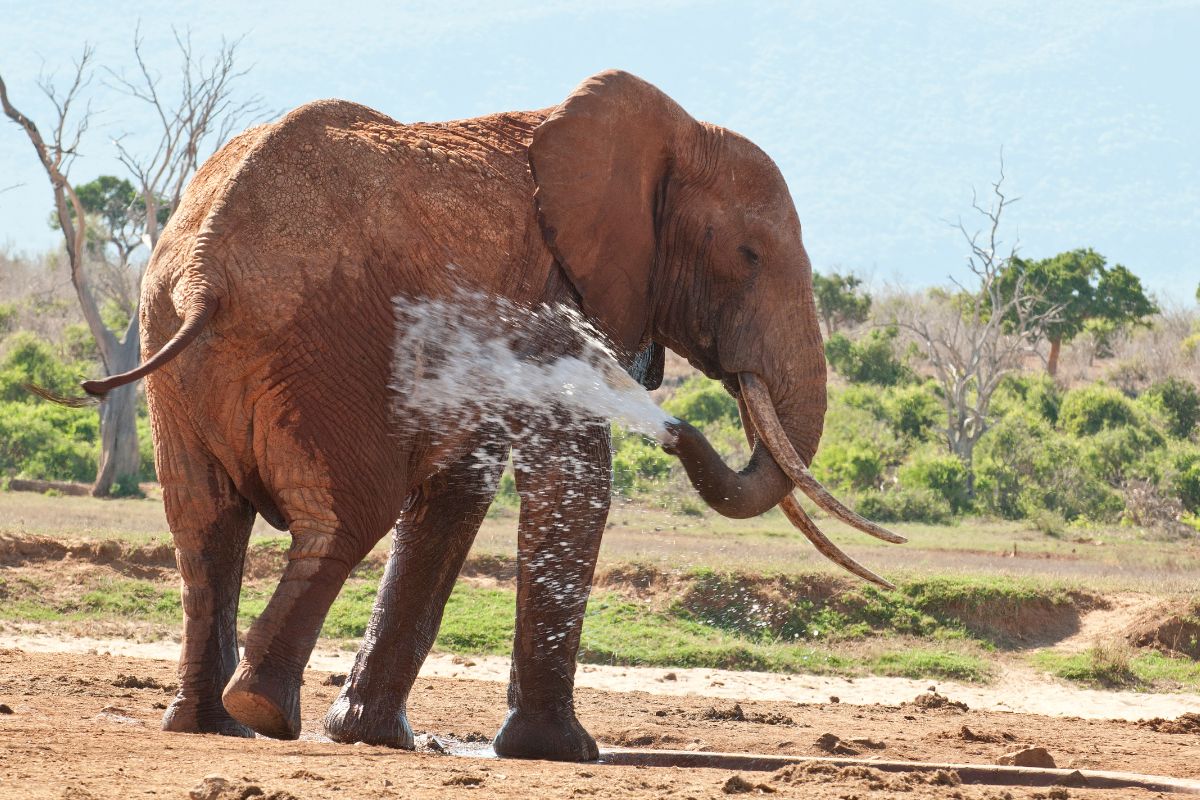
Location and Access of Amboseli National Park
Amboseli National Park lies in Kajiado County, southern Kenya, approximately 215 kilometers southeast of Nairobi, near the border with Tanzania. The park covers about 392 square kilometers at the foot of the majestic Mount Kilimanjaro, Africa’s highest peak.
It can be accessed via Namanga Road (through Emali or Loitoktok) and through main gates such as Meshanani, Iremito, Kimana, and Kelunyiet.
Travelers can reach Amboseli by road (a four-hour drive from Nairobi) or by air, with scheduled flights from Wilson Airport to the Amboseli Airstrip.
Its accessibility and scenic setting make it ideal for short safaris, weekend escapes, and photography-driven expeditions.
Key Attractions and Wildlife in Amboseli National Park
Amboseli is one of Kenya’s most iconic safari destinations, offering dramatic contrasts between arid plains and lush swamps fed by Mount Kilimanjaro’s underground waters.
Key highlights include:
Elephants: Famous for its massive herds of free-ranging elephants, some of the most photographed in Africa.
Predators: Regular sightings of lions, cheetahs, and leopards across open grasslands.
Plains Game: Zebras, wildebeests, giraffes, buffaloes, impalas, and gazelles dominate the savannah ecosystem.
Birdlife: Over 420 bird species, including pelicans, flamingos, eagles, and crowned cranes.
Unique Landscapes: Swamps and Lake Amboseli (a seasonal lake) sustain wildlife year-round; Observation Hill offers panoramic views of the park and Kilimanjaro’s backdrop.
This spectacular combination of wildlife and scenery makes Amboseli one of Kenya’s most photographed and ecologically rich national parks.
Activities and Experiences in Amboseli National Park
Amboseli offers immersive safari experiences suitable for both first-time visitors and seasoned explorers.
Game Drives: Morning and evening drives maximize sightings of elephants and predators.
Guided Nature Walks: Explore flora, fauna, and Maasai traditions with certified local guides.
Birdwatching Tours: Especially rewarding during the wet season when migratory species thrive.
Cultural Visits: Visit nearby Maasai villages to experience authentic traditions and crafts.
Photography Safaris: Capture elephants against Kilimanjaro’s snow-capped summit — Africa’s most timeless frame.
Sundowners: Watch golden sunsets from Observation Hill overlooking Amboseli’s marshlands.
Every activity connects visitors to Amboseli’s dynamic ecosystems and deep cultural roots.
Best Time to Visit Amboseli National Park
The best time to visit Amboseli is during the dry seasons (June–October and January–February) when wildlife concentrates around swamps and visibility of Mount Kilimanjaro is clearest.
The wet seasons (March–May and November–December) bring lush vegetation, newborn wildlife, and vibrant bird activity — ideal for photography and serenity.
For the most rewarding experience, plan early morning drives to witness Kilimanjaro before clouds settle, and late-afternoon safaris for golden-light photography.
3. Tsavo East National Park, Kenya

Location and Access of Tsavo East National Park
Tsavo East National Park is located in Taita-Taveta County, part of the Coastal Region of Kenya. It spans approximately 13,747 square kilometers, making it one of the largest national parks in Kenya. The park is about 333 kilometers from Nairobi and 173 kilometers from Mombasa, accessible via the Nairobi–Mombasa Highway (A109) through Voi Gate, Buchuma Gate, or Manyani Gate. Visitors can reach the park by road or air, with several airstrips within the park, including Voi, Aruba, and Satao airstrips. Its strategic location makes it ideal for both coastal tourists and inland travelers seeking authentic wildlife encounters.
Key Attractions and Wildlife in Tsavo East National Park
Tsavo East is famed for its vast open landscapes, dramatic red-earth scenery, and abundant wildlife. Key attractions include:
Large herds of red-dust elephants, lions, leopards, buffaloes, and cheetahs.
The Galana River, which flows through the park, forming the stunning Lugard Falls.
The Yatta Plateau, the world’s longest lava flow, offering breathtaking views and geological fascination.
The Aruba Dam, a prime spot for observing wildlife congregating to drink water.
Excellent birdwatching, with over 500 recorded species, including ostriches, kingfishers, and hornbills.
Tsavo East’s blend of wild terrain, iconic landmarks, and prolific wildlife makes it one of the most authentic and untamed safari experiences in Kenya.
Best Time to Visit Tsavo East National Park
The best time to visit Tsavo East is during the dry seasons (June–October and January–February) when animals gather around rivers and waterholes, providing excellent viewing opportunities. During the wet seasons (March–May and November–December), the park’s landscapes come alive with greenery, ideal for birdwatching and photography. Early morning and late-afternoon game drives offer the best lighting and activity levels for spotting predators and elephants.
Activities and Experiences in Tsavo East National Park
Visitors can immerse themselves in a range of unforgettable experiences, including:
Game drives across the red plains to spot the “Big Five.”
Birdwatching excursions along the Galana River and at the Aruba Dam.
Guided nature walks and photographic safaris for close-up encounters with the park’s beauty.
Visits to Lugard Falls, Mudhanda Rock, or Yatta Plateau viewpoints.
Camping and overnight lodges for full immersion into the African wilderness.
Each adventure in Tsavo East reveals Kenya’s raw, unspoiled natural beauty and deepens appreciation for its vast wildlife heritage.
4. Tsavo West National Park, Kenya

Location and Access of Tsavo West National Park
Tsavo West National Park is located in Taita-Taveta County, within Kenya’s Coastal Region, bordering Tsavo East National Park to the east. Covering approximately 9,065 square kilometers, it lies about 240 kilometers from Nairobi and 250 kilometers from Mombasa, making it easily accessible from both cities via the Nairobi–Mombasa Highway (A109) through Mtito Andei Gate. Air travel is also available, with several airstrips including Kamboyo, Kilaguni, and Finch Hattons serving charter flights. The park’s accessibility and proximity to major tourist circuits make it ideal for weekend safaris and combined Tsavo expeditions.
Key Attractions and Wildlife in Tsavo West National Park
Tsavo West offers one of Kenya’s most scenic and diverse safari experiences, blending rugged landscapes with rich biodiversity. Key attractions include:
The Mzima Springs, a natural oasis fed by underground streams from Mount Kilimanjaro, known for crystal-clear waters and hippo viewing.
The Shetani Lava Flow, a striking black lava field formed by ancient volcanic activity.
The Ngulia Rhino Sanctuary, home to protected populations of black rhinos.
The Chaimu Crater and Poacher’s Lookout, providing panoramic views of the park’s terrain.
Iconic wildlife such as elephants, buffaloes, lions, cheetahs, leopards, giraffes, zebras, and over 400 bird species.
Tsavo West’s dramatic mix of savannah, volcanic hills, and lush springs makes it one of Kenya’s most captivating parks for both nature and photography enthusiasts.
Best Time to Visit Tsavo West National Park
The best time to visit Tsavo West is during the dry seasons (June–October and January–February), when roads are easily passable and wildlife congregates around water sources such as Mzima Springs. During the wet seasons (March–May and November–December), the park transforms into a green paradise, with excellent birdwatching opportunities and scenic landscapes ideal for photography. Early morning and late afternoon drives are optimal for wildlife activity and lighting.
Activities and Experiences in Tsavo West National Park
Visitors can experience a wide range of activities, including:
Game drives across the savannahs and volcanic plains.
Visits to Mzima Springs to observe hippos and crocodiles through underwater viewing galleries.
Hiking excursions at Chaimu Crater and the Shetani Lava Flow.
Rhino tracking at the Ngulia Rhino Sanctuary.
Birdwatching, photography safaris, and nature walks guided by Kenya Wildlife Service rangers.
Camping and lodge stays in scenic, wildlife-rich settings.
Each experience in Tsavo West delivers a blend of adventure, tranquility, and natural wonder — a true testament to Kenya’s iconic safari legacy.
5. Aberdare National Park, Kenya

Location and Access of Aberdare National Park
Aberdare National Park is located in Nyandarua and Nyeri Counties, approximately 160 kilometers north of Nairobi in Kenya’s Central Highlands. The park covers about 767 square kilometers and encompasses the scenic Aberdare Mountain Range, rising to elevations of nearly 4,000 meters at Ol Donyo Lesatima Peak.
It can be accessed via road from Nyeri or Naivasha, with main entry points through Treetops Gate, Ark Gate, and Kiandongoro Gate. Air travelers can use the nearby Mweiga Airstrip for charter flights. The park’s accessibility and cool highland climate make it ideal for weekend safaris and nature retreats from Nairobi.
Key Attractions and Wildlife in Aberdare National Park
Aberdare National Park offers an unmatched blend of mountain scenery, dense forests, and cascading waterfalls. Key attractions include:
Karuru Falls, Kenya’s tallest waterfall at over 270 meters.
Magura and Chania Falls, known for their photogenic backdrops.
Lush bamboo forests and alpine moorlands, offering scenic hiking routes.
Wildlife such as elephants, buffaloes, leopards, black rhinos, and the rare bongo antelope.
Bird species exceeding 250 varieties, including Jackson’s francolin and Aberdare cisticola.
This unique combination of biodiversity, misty forests, and mountainous beauty makes Aberdare one of Kenya’s most captivating national parks.
Activities and Experiences in Aberdare National Park
Visitors can enjoy a range of experiences such as:
Day and night game drives with sightings at popular lodges like The Ark and Treetops.
Waterfall hiking and forest walks guided by rangers.
Birdwatching and photography safaris in highland habitats.
Trout fishing in mountain streams.
Camping in designated highland zones for a wilderness experience.
Each activity reveals a new dimension of the park’s tranquil, high-altitude ecosystem and conservation significance.
Best Time to Visit Aberdare National Park
The best time to visit Aberdare National Park is during the dry seasons (January–February and June–September), when roads are easily passable and wildlife sightings are frequent. The wet months (March–May and October–December) transform the park into a lush paradise with full waterfalls and vibrant flora, ideal for photography.
Due to its altitude, temperatures remain cool year-round, so visitors should pack warm clothing even during the dry season.
6. Mount Kenya National Park, Kenya

Location and Access of Mount Kenya National Park
Mount Kenya National Park is located in central Kenya, straddling Kirinyaga, Embu, Meru, and Laikipia Counties, approximately 175 kilometers northeast of Nairobi. It covers an area of about 715 square kilometers, surrounding Mount Kenya, Africa’s second-highest peak at 5,199 meters (17,057 feet) above sea level.
The park is accessible by road through Nanyuki (Sirimon Gate), Chogoria Gate (Meru side), and Naru Moru Gate (Nyeri side) — all connected by well-maintained tarmac routes from Nairobi. Air access is available via Nanyuki Airstrip, which accommodates daily scheduled flights. The park’s location and accessibility make it perfect for mountain expeditions, scenic drives, and high-altitude hiking.
Key Attractions and Wildlife in Mount Kenya National Park
Mount Kenya National Park is a UNESCO World Heritage Site and a Biosphere Reserve, revered for its dramatic landscapes and ecological diversity. Key attractions include:
The snow-capped peaks of Batian, Nelion, and Point Lenana — offering world-class mountaineering opportunities.
Glacial lakes and tarns, such as Lake Ellis, Lake Alice, and Lake Michelson.
Dense bamboo forests and alpine meadows, home to rare plant species like the giant lobelia and senecio.
Wildlife such as elephants, buffaloes, leopards, bushbucks, and hyenas, along with unique high-altitude species like the Mount Kenya hyrax and sunbirds.
Scenic hiking trails leading to Met Station Camp, Shipton’s Camp, and Old Moses Camp, which serve as gateways to summit attempts.
This fusion of alpine beauty, wildlife, and cultural heritage makes Mount Kenya one of the most iconic and spiritually significant parks in Africa.
Activities and Experiences in Mount Kenya National Park
Visitors can engage in a diverse range of activities, including:
Mountain climbing and trekking to Point Lenana or other summits.
Hiking and nature walks through forest and moorland ecosystems.
Wildlife viewing and photography, especially at lower altitudes.
Camping and overnight expeditions at designated campsites.
Birdwatching, featuring species endemic to high-elevation environments.
Cultural experiences with the local Kikuyu and Meru communities, who hold the mountain sacred.
These activities offer both adventure and reflection — blending natural beauty with Kenya’s deep-rooted cultural spirituality.
Best Time to Visit Mount Kenya National Park
The best time to visit Mount Kenya National Park is during the dry seasons (January–February and July–October), when trails are more accessible and climbing conditions are optimal. The wet months (March–June and November–December) often bring heavy rainfall and cloud cover, making treks more challenging but rewarding for photographers seeking dramatic landscapes.
Given the park’s altitude, temperatures can drop below freezing at night — visitors are advised to carry warm clothing and gear suited for alpine conditions.
7. Lake Nakuru National Park, Kenya

Location and Access of Lake Nakuru National Park
Lake Nakuru National Park is located in Rift Valley Province, within Nakuru County, approximately 160 kilometers northwest of Nairobi. The park covers about 188 square kilometers, surrounding Lake Nakuru, a shallow soda lake renowned for its flamingo populations and alkaline waters.
The main access points are Baboon Cliff Gate and Satonya Gate, with well-maintained roads connecting from Nakuru town. Visitors can also fly into Nakuru Airstrip, which accommodates small aircraft for chartered safari flights. Its proximity to Nairobi makes it ideal for day trips, weekend safaris, and short wildlife excursions.
Key Attractions and Wildlife in Lake Nakuru National Park
Lake Nakuru National Park is famed for its spectacular birdlife, diverse wildlife, and scenic landscapes. Key attractions include:
Flamingos, which famously turn the lake pink during peak seasons.
Rothschild’s giraffes, black and white rhinos, lions, leopards, buffaloes, and hippos.
The Baboon Cliff, offering panoramic views of the lake and surrounding park.
Scenic acacia woodlands and grasslands, perfect for game drives and photography.
Over 400 bird species, including pelicans, kingfishers, and cormorants, making it a top destination for birdwatchers.
This combination of vibrant flamingo displays, iconic wildlife, and scenic vistas makes Lake Nakuru one of Kenya’s most visually striking national parks.
Activities and Experiences in Lake Nakuru National Park
Visitors can enjoy a variety of activities, including:
Game drives across the park’s grasslands and woodlands.
Birdwatching and photography safaris, especially to capture flamingos at sunrise.
Guided nature walks and short hikes to scenic viewpoints such as Baboon Cliff.
Picnicking and wildlife observation near the lake shores.
Conservation programs that support rhino protection and park sustainability.
Each activity provides a close connection to the park’s unique ecosystems and the chance to witness both rare and iconic species.
Best Time to Visit Lake Nakuru National Park
The best time to visit Lake Nakuru National Park is during the dry seasons (June–September and January–February), when water levels drop, concentrating wildlife and enhancing viewing opportunities. The wet months (March–May and October–December) bring lush greenery and increase bird diversity, although the lake’s color may vary with water levels. Early morning and late afternoon drives offer optimal light for photography and wildlife spotting.
8. Hell’s Gate National Park, Kenya
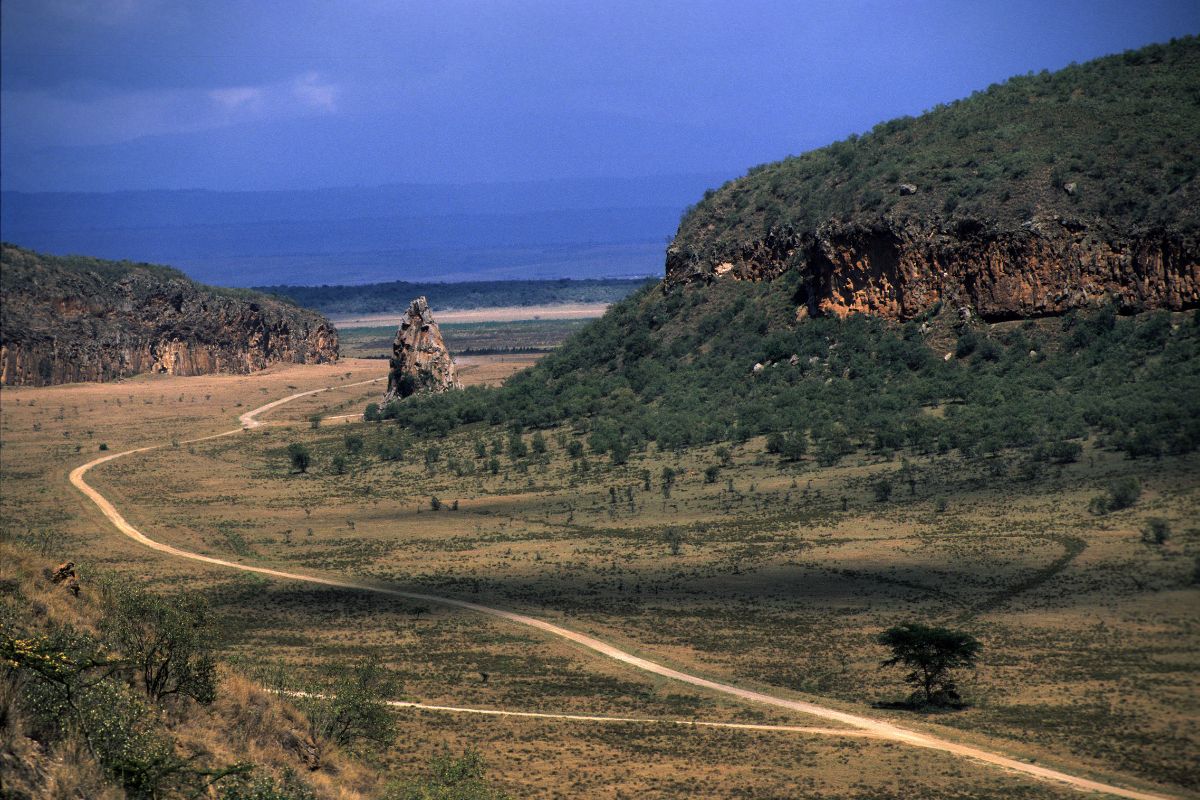
Location and Access of Hell’s Gate National Park
Hell’s Gate National Park is located in Naivasha, Nakuru County, within Kenya’s Rift Valley region, approximately 90 kilometers northwest of Nairobi. The park covers about 68 square kilometers, making it one of Kenya’s smaller but most scenic parks. Visitors can access it via Naivasha town, with main entrances at Main Gate and Park Gate. The park is easily reached by road, and day trips from Nairobi are common, while air access is available through Naivasha Airstrip for chartered flights. Its accessibility and compact size make it ideal for day visits, cycling, and hiking excursions.
Key Attractions and Wildlife in Hell’s Gate National Park
Hell’s Gate is famed for its dramatic landscapes and outdoor adventure opportunities rather than large concentrations of wildlife. Key attractions include:
Spectacular gorges, including Fischer’s Tower and Central Gorge.
Geothermal features, such as hot springs and fumaroles.
Cliffs and rock formations ideal for rock climbing and abseiling.
Wildlife such as zebras, giraffes, elands, hartebeests, and hyenas.
Birdlife, including eagles, sunbirds, and African fish eagles.
The park’s combination of rugged terrain, wildlife, and adventure opportunities makes it a unique destination for both safari-goers and outdoor enthusiasts.
Activities and Experiences in Hell’s Gate National Park
Visitors can enjoy a variety of experiences, including:
Cycling and walking safaris, exploring gorges and cliffs up close.
Rock climbing and abseiling at dramatic escarpments.
Guided hikes to geothermal features and scenic viewpoints.
Game viewing and wildlife photography, particularly of grazing herbivores.
Birdwatching along the Naivasha lakeshore and within the park.
These activities provide immersive ways to experience Kenya’s geological wonders and wildlife in an accessible, adventurous setting.
Best Time to Visit Hell’s Gate National Park
The best time to visit Hell’s Gate is during the dry seasons (June–September and January–February) when trails are safer and wildlife sightings are easier. The wet months (March–May and October–December) bring lush vegetation and dramatic waterfalls in gorges, enhancing scenic beauty but making some trails slippery. Morning and late afternoon visits are ideal for cooler temperatures and optimal light for photography.
9. Mount Longonot National Park, Kenya

Location and Access of Mount Longonot National Park
Mount Longonot National Park is located in Naivasha, Nakuru County, within Kenya’s Rift Valley region, approximately 90 kilometers northwest of Nairobi. The park covers about 52 square kilometers and encompasses Mount Longonot, a dormant stratovolcano rising to 2,776 meters above sea level.
Access is primarily via road from Nairobi or Naivasha town, with the main entry at Mount Longonot Gate. Air access is limited, but chartered flights can land at nearby Naivasha Airstrip. The park’s accessibility and proximity to Nairobi make it ideal for day trips, hiking expeditions, and adventure safaris.
Key Attractions and Wildlife in Mount Longonot National Park
Mount Longonot National Park is celebrated for its dramatic volcanic landscapes, caldera views, and high-altitude wildlife. Key attractions include:
Mount Longonot Crater, offering panoramic views of the Rift Valley and Naivasha.
Hiking trails leading to the summit and around the rim of the caldera.
Wildlife including zebras, buffaloes, giraffes, elands, and gazelles.
Rich birdlife, such as vultures, eagles, weavers, and hornbills.
Scenic geological features, including lava flows and volcanic rocks, providing unique photography opportunities.
The combination of volcanic scenery, hiking challenges, and wildlife viewing makes Mount Longonot a must-visit for adventure-seeking travelers.
Activities and Experiences in Mount Longonot National Park
Visitors can engage in a variety of experiences, including:
Hiking and summit climbs with panoramic views of the caldera and Rift Valley.
Walking and nature trails along the lower slopes for wildlife spotting.
Birdwatching and wildlife photography throughout the park.
Picnicking in designated scenic areas.
Eco-tours with guides explaining the park’s geological and ecological significance.
These activities provide both adventure and opportunities to connect with Kenya’s volcanic landscapes and Rift Valley ecosystems.
Best Time to Visit Mount Longonot National Park
The best time to visit Mount Longonot is during the dry seasons (June–September and January–February), when trails are firm and hiking conditions are safer. The wet months (March–May and October–December) can make slopes slippery, though the surrounding landscape becomes lush and vibrant. Early morning hikes are recommended for cooler temperatures and clear views of the crater and valley.
10. Meru National Park, Kenya
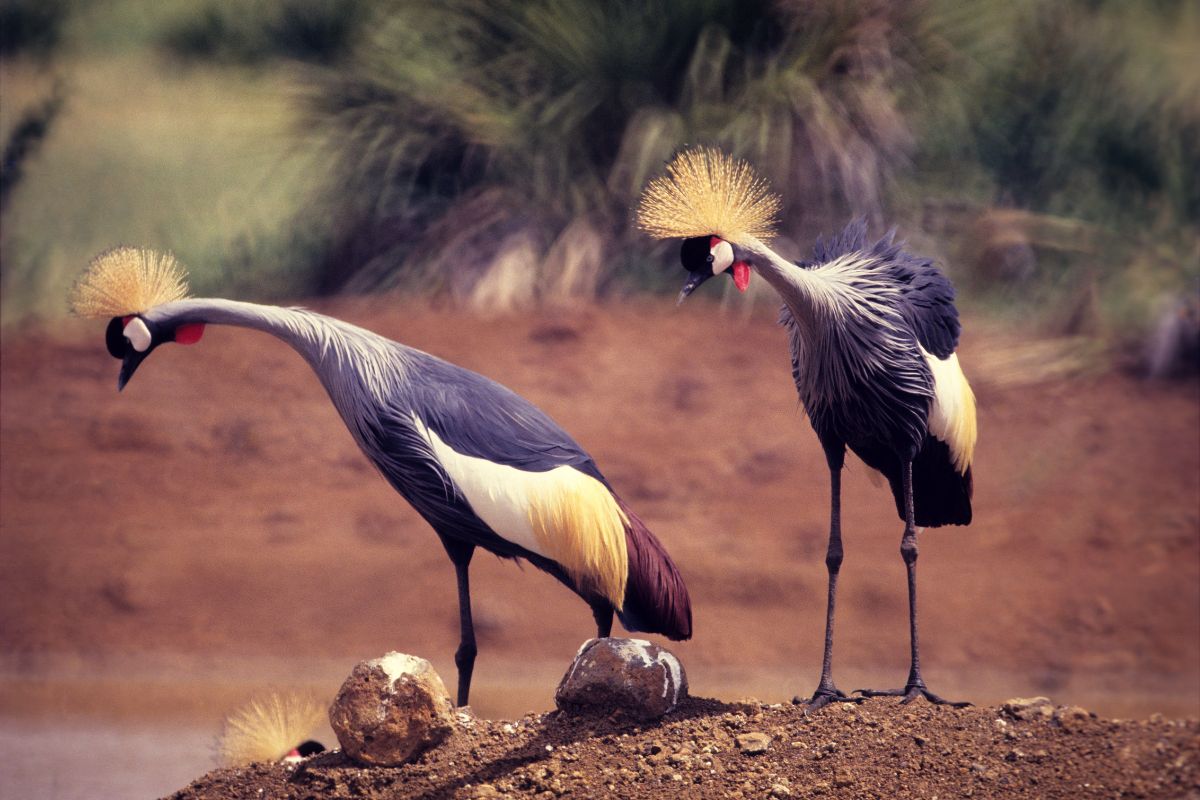
Location and Access of Meru National Park
Meru National Park is located in Meru County, within Kenya’s Eastern region, approximately 350 kilometers northeast of Nairobi. The park covers about 870 square kilometers and lies along the Ewaso Nyiro River, offering a mix of savannah, riverine forests, and swampy wetlands.
Visitors can access the park via road from Isiolo or Nairobi, with main entry points at Ngerende Gate and Kigio Gate. Air access is available through Meru Airstrip, which accommodates chartered flights. The park’s remoteness and accessibility make it ideal for multi-day safaris, birdwatching, and family trips.
Key Attractions and Wildlife in Meru National Park
Meru National Park is known for its rich biodiversity, scenic river landscapes, and historical significance. Key attractions include:
The Ewaso Nyiro River, providing water and lush vegetation for wildlife.
Diverse wildlife, including lions, elephants, leopards, cheetahs, giraffes, buffaloes, zebras, and rhinos.
Rare species, such as Grevy’s zebra, reticulated giraffe, and gerenuk.
Birdlife, with over 400 species, including fish eagles, kingfishers, and herons.
Historical sites, such as the former home of Elsa the lioness from the book and movie Born Free.
The combination of rivers, plains, and forested areas makes Meru National Park a haven for both wildlife enthusiasts and photographers.
Activities and Experiences in Meru National Park
Visitors can enjoy a variety of activities, including:
Game drives along the riverine forests and open plains.
Birdwatching and photography safaris, especially around the Ewaso Nyiro River.
Guided walking safaris with trained rangers.
Cultural visits to nearby Meru communities.
Camping and lodge stays along scenic riverbanks.
These activities provide immersive wildlife experiences in a less-crowded and pristine Kenyan landscape.
Best Time to Visit Meru National Park
The best time to visit Meru National Park is during the dry seasons (June–September and January–February), when wildlife is easier to spot near water sources. The wet months (March–May and October–December) bring lush greenery and abundant birdlife, enhancing photography opportunities but making some tracks muddy. Morning and late-afternoon game drives are recommended for optimal wildlife sightings and lighting.
11. Samburu National Park, Kenya
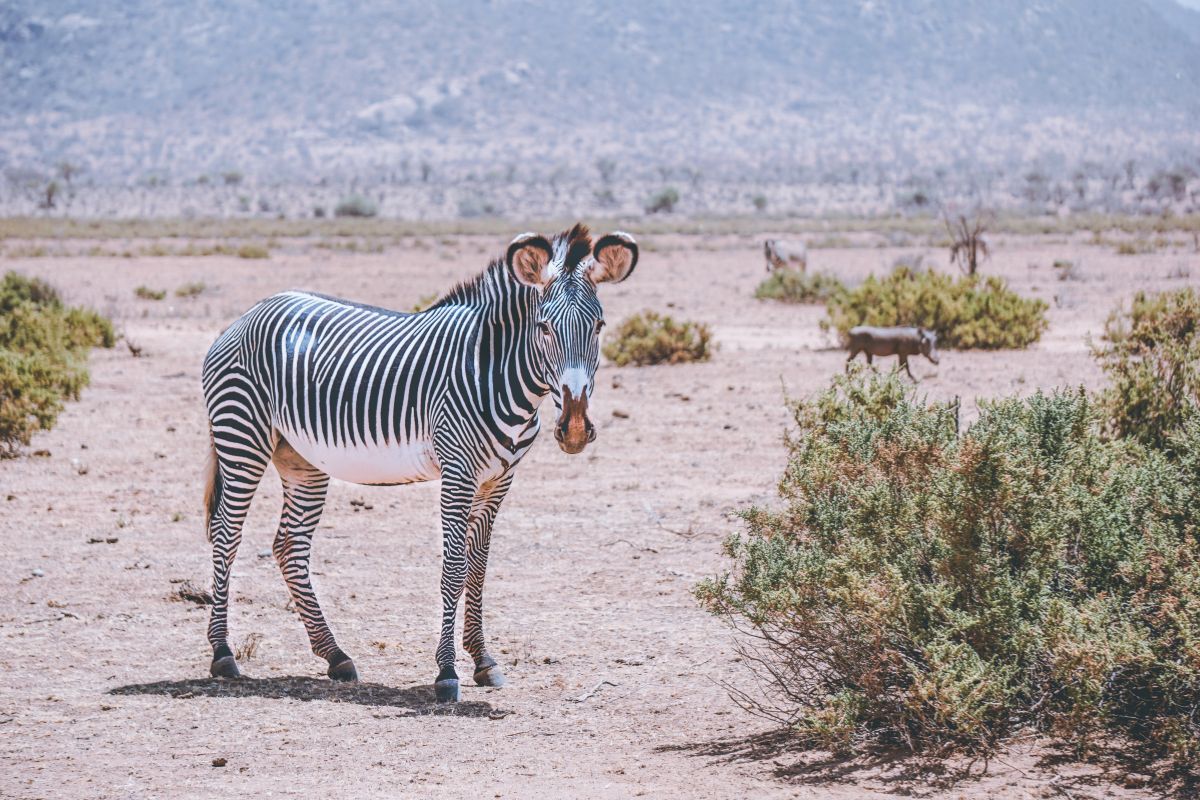
Location and Access of Samburu National Park
Samburu National Park is located in Samburu County, in Kenya’s Northern Rift Valley region, approximately 350 kilometers north of Nairobi. The park covers about 165 square kilometers along the Ewaso Nyiro River, which supports a rich array of wildlife in this semi-arid environment.
The park is accessible by road from Nairobi or Nanyuki, with the main entry point at Samburu Gate. Air access is possible via Samburu Airstrip for small chartered flights. Its location makes it ideal for multi-day safaris, wildlife photography, and birdwatching expeditions.
Key Attractions and Wildlife in Samburu National Park
Samburu National Park is famous for its unique northern species and semi-arid landscapes. Key attractions include:
“Samburu Special Five” — Grevy’s zebra, Somali ostrich, reticulated giraffe, gerenuk, and Beisa oryx.
Other wildlife such as lions, leopards, elephants, cheetahs, and hyenas.
Scenic acacia-studded plains and the Ewaso Nyiro River supporting lush riverine vegetation.
Birdlife, including kingfishers, rollers, and African fish eagles.
Cultural encounters with the Samburu people, showcasing traditional lifestyles and crafts.
This blend of rare wildlife, arid savannah landscapes, and rich cultural heritage makes Samburu a distinctive and rewarding safari destination.
Activities and Experiences in Samburu National Park
Visitors can enjoy a variety of experiences, including:
Game drives along the river and open plains.
Birdwatching and wildlife photography, particularly of the Samburu Special Five.
Guided nature walks with trained rangers.
Cultural visits to local Samburu villages.
Camping or lodge stays along the river for immersive experiences.
These activities allow travelers to explore both the unique wildlife and the cultural richness of northern Kenya.
Best Time to Visit Samburu National Park
The best time to visit Samburu National Park is during the dry seasons (June–September and January–February) when animals congregate near water sources, making sightings easier. The wet months (March–May and October–December) bring lush vegetation and vibrant birdlife but may make some roads less accessible. Early morning and late-afternoon game drives are recommended for optimal wildlife viewing and photography.
12. Ruma National Park, Kenya
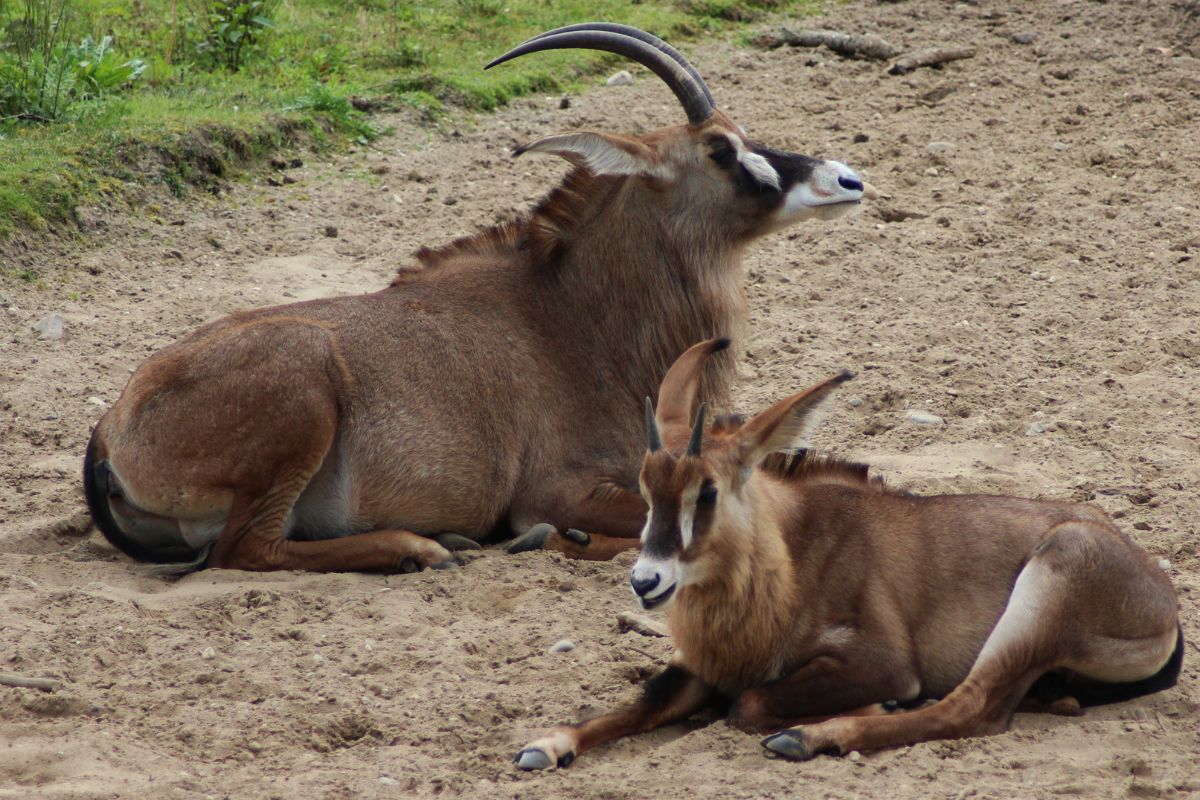
Location and Access of Ruma National Park
Ruma National Park is located in Homa Bay County, in Kenya’s western region, approximately 370 kilometers west of Nairobi near the shores of Lake Victoria. The park covers about 120 square kilometers and is the only national park in western Kenya dedicated to wildlife conservation.
Access is primarily by road from Kisumu or Homa Bay town, with the main entry at Ruma Gate. Air access is limited, but Kisumu International Airport serves as the nearest hub for chartered flights. Its location and seclusion make it ideal for day trips, wildlife safaris, and birdwatching excursions.
Key Attractions and Wildlife in Ruma National Park
Ruma National Park is renowned for its diverse wildlife and conservation efforts. Key attractions include:
Roan antelopes, one of the park’s flagship species.
Other wildlife such as lions, leopards, elephants, buffaloes, hartebeests, and zebras.
Birdlife, with over 400 species, including rare species such as the grey-crested helmetshrike.
Scenic landscapes, including grasslands, wooded hills, and riverine areas.
Conservation projects aimed at protecting endangered species and preserving natural habitats.
This blend of unique species, scenic landscapes, and conservation significance makes Ruma National Park a hidden gem in Kenya’s safari circuit.
Activities and Experiences in Ruma National Park
Visitors can enjoy a variety of experiences, including:
Game drives to spot flagship species and predators.
Birdwatching and wildlife photography in varied habitats.
Guided nature walks for immersive wildlife encounters.
Camping and lodge stays within park-designated zones.
Conservation tours, learning about local efforts to protect rare species.
These activities provide visitors with both adventure and insight into western Kenya’s wildlife and ecosystems.
Best Time to Visit Ruma National Park
The best time to visit Ruma National Park is during the dry seasons (June–September and January–February), when wildlife is concentrated around water sources, making sightings easier. The wet months (March–May and October–December) transform the park into lush green landscapes, enhancing scenery and birdwatching but making some roads slippery. Morning and late-afternoon game drives are recommended for optimal wildlife viewing and photography.
13. Mount Elgon National Park, Kenya

Location and Access of Mount Elgon National Park
Mount Elgon National Park is located in Trans-Nzoia County, in western Kenya, along the border with Uganda, approximately 380 kilometers northwest of Nairobi. The park covers about 303 square kilometers, surrounding Mount Elgon, an extinct shield volcano that rises to 4,321 meters at Wagagai Peak, making it one of Kenya’s highest mountains.
Access is primarily by road from Kitale town, with the main entry at Sasa Gate. Visitors can also fly into Eldoret International Airport and continue by road. The park’s location offers opportunities for mountain trekking, hiking, and multi-day safaris in a cooler highland climate.
Key Attractions and Wildlife in Mount Elgon National Park
Mount Elgon National Park is renowned for its rich biodiversity, ancient caves, and high-altitude ecosystems. Key attractions include:
Mount Elgon Crater and caves, such as Chepnyalil Cave and Kitum Cave, where elephants mine salt deposits.
Unique flora, including bamboo forests, alpine moorlands, giant groundsels, and lobelias.
Wildlife such as elephants, buffalos, leopards, monkeys, and duikers.
Birdlife, including sunbirds, hornbills, and various raptors.
Scenic landscapes of waterfalls, rivers, cliffs, and lush valleys ideal for photography and hiking.
This combination of geological wonders, endemic species, and lush scenery makes Mount Elgon a distinctive adventure and nature destination.
Activities and Experiences in Mount Elgon National Park
Visitors can enjoy a variety of activities, including:
Mountain climbing and trekking to Wagagai Peak and crater rim trails.
Guided nature walks through bamboo forests and moorlands.
Wildlife viewing and birdwatching, particularly in riverine and forested areas.
Photography of waterfalls, caves, and scenic highland landscapes.
Cultural encounters with local communities, who have historical ties to the mountain.
These activities provide a mix of adventure, wildlife appreciation, and immersive highland experiences.
Best Time to Visit Mount Elgon National Park
The best time to visit Mount Elgon National Park is during the dry seasons (June–September and January–February), when trails are safer, and hiking conditions are optimal. The wet months (March–May and October–December) bring lush greenery, waterfalls, and birdlife, though trails can be slippery. Early morning and late afternoon treks are recommended for cooler temperatures, wildlife spotting, and dramatic photography opportunities.
14. Sibiloi National Park, Kenya

Location and Access of Sibiloi National Park
Sibiloi National Park is located in Marsabit County, along the northeastern shores of Lake Turkana in Kenya’s northern region, approximately 550 kilometers north of Nairobi. The park covers about 1,570 square kilometers, making it one of the country’s largest and most remote protected areas.
Access is primarily by road from Lodwar or Marsabit, though roads can be rough and suitable for 4×4 vehicles. Lodwar Airport provides limited air access via chartered flights. The park’s remoteness makes it ideal for adventurous travelers, multi-day safaris, and geological or paleontological explorations.
Key Attractions and Wildlife in Sibiloi National Park
Sibiloi National Park is renowned for its paleontological significance, desert landscapes, and unique wildlife. Key attractions include:
Koobi Fora, a world-famous archaeological and fossil site, where some of humanity’s oldest hominid remains have been discovered.
Lake Turkana, supporting diverse fish species and birdlife.
Wildlife such as reticulated giraffes, Grevy’s zebras, lions, leopards, and elephants.
Over 400 bird species, including pelicans, flamingos, and Egyptian geese.
Scenic desert landscapes, volcanic hills, and sand dunes that provide a striking backdrop for photography.
This combination of archaeological significance, rare wildlife, and remote landscapes makes Sibiloi a unique and educational safari destination.
Activities and Experiences in Sibiloi National Park
Visitors can enjoy a variety of experiences, including:
Guided game drives across the savannah and lakeshore habitats.
Birdwatching and wildlife photography, especially along Lake Turkana.
Paleontological tours at Koobi Fora, learning about ancient hominid discoveries.
Cultural visits to local Turkana communities.
Camping or lodge stays for an immersive experience in a remote wilderness setting.
These activities provide travelers with both adventure and a deeper understanding of northern Kenya’s ecological and historical heritage.
Best Time to Visit Sibiloi National Park
The best time to visit Sibiloi National Park is during the dry seasons (June–September and January–February) when wildlife is easier to spot near water sources and roads are more navigable. The wet months (March–May and October–December) bring occasional flooding and rough terrain but also lush desert greenery and abundant birdlife. Early mornings and late afternoons are ideal for game viewing, photography, and comfortable travel conditions.
15. Kisite-Mpunguti Marine National Park, Kenya
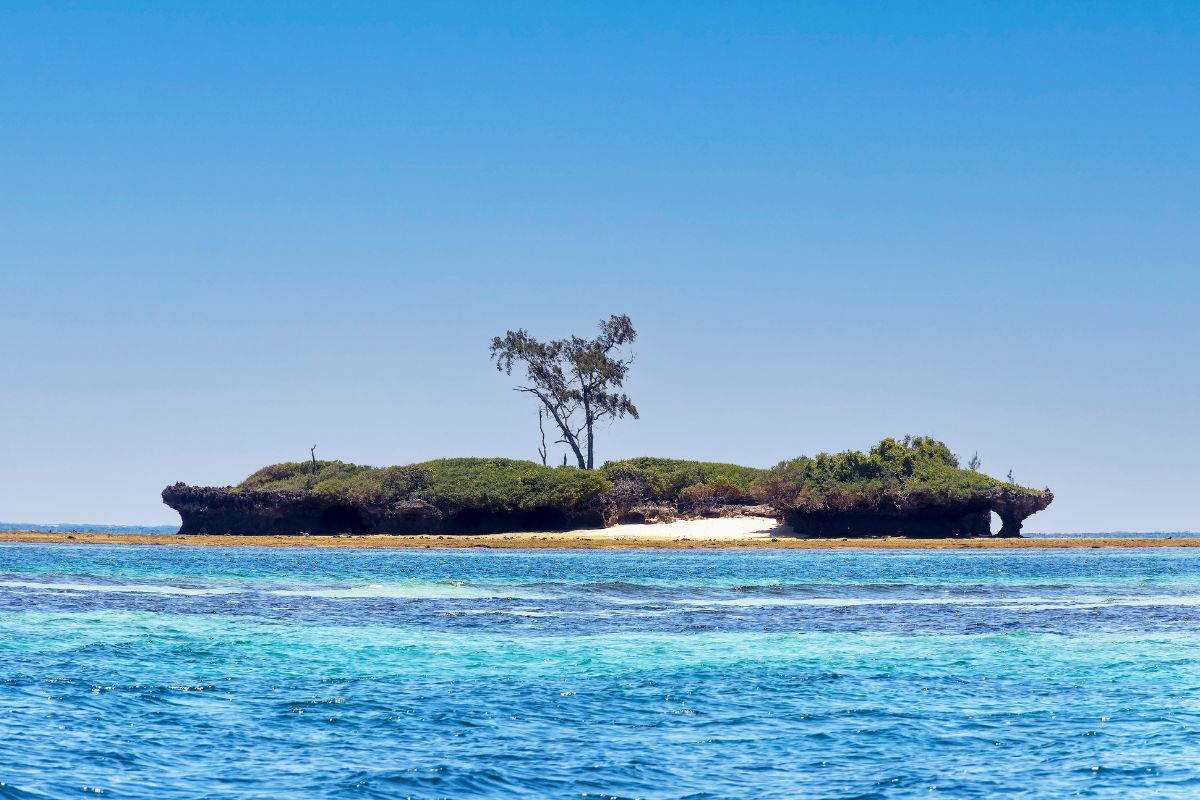
Location and Access of Kisite-Mpunguti Marine National Park
Kisite-Mpunguti Marine National Park is located in Kwale County, along Kenya’s southern coastline near Shimoni, approximately 470 kilometers southeast of Nairobi. The park covers about 39 square kilometers and protects coral reefs, marine biodiversity, and islands in the Indian Ocean.
Access is primarily by boat from Shimoni, the main gateway to the park, with no direct road entry. Air access is available via Ukunda/Diani Airstrip, followed by a short road trip to Shimoni. Its coastal location makes it ideal for day trips, snorkeling, diving, and marine wildlife tours.
Key Attractions and Wildlife in Kisite-Mpunguti Marine National Park
Kisite-Mpunguti is renowned for its vibrant marine ecosystems and clear waters. Key attractions include:
Coral reefs teeming with colorful fish species and invertebrates.
Marine wildlife such as dolphins, sea turtles, manta rays, and whale sharks (seasonal).
Seven small islands, including Mpunguti and Kisite, offering pristine beaches and snorkeling spots.
Rich birdlife, including seabirds nesting on the islands.
Opportunities for underwater photography and marine conservation tours.
This combination of coral reefs, diverse marine life, and scenic islands makes Kisite-Mpunguti a top destination for ocean-based adventures in Kenya.
Activities and Experiences in Kisite-Mpunguti Marine National Park
Visitors can enjoy a variety of activities, including:
Snorkeling and scuba diving among vibrant coral reefs.
Dolphin watching and boat safaris around the islands.
Swimming and guided marine tours to explore underwater ecosystems.
Photography of marine life, islands, and coastal scenery.
Eco-tours and conservation experiences, learning about coral reef protection and marine biodiversity.
These activities provide an immersive experience of Kenya’s coastal wildlife and highlight the country’s efforts in marine conservation.
Best Time to Visit Kisite-Mpunguti Marine National Park
The best time to visit Kisite-Mpunguti is during the dry season (June–September and January–February) when waters are calm, visibility for diving is excellent, and marine life is more active. The wet season (March–May and October–December) can bring rougher seas and occasional heavy rains, affecting access and water clarity. Early morning trips are recommended for optimal dolphin and marine life sightings.
Kenya’s National Reserves
Kenya’s National Reserves complement the country’s national parks by offering rich, diverse, and often less-crowded wildlife experiences. Managed by the Kenya Wildlife Service (KWS) in collaboration with county governments and local communities, these reserves protect ecosystems ranging from mountain forests and wetlands to arid savannahs. They also serve as vital migration corridors and cultural conservation zones, supporting sustainable community-based tourism.
Below, the 28 National Reserves are organized by circuit, making it easy to explore Kenya’s wildlife across the Southern, Central Highlands, Rift Valley, Western, and Northern regions.
- Southern Circuit Reserves
- Central Highlands Circuit Reserves
- Rift Valley Circuit Reserves
- Western Circuit Reserves
- Northern Circuit Reserves
The Southern Circuit Reserves are located in Kenya’s coastal and southeastern regions, offering lush landscapes, rolling hills, and diverse wildlife habitats. These reserves are generally less-crowded than the national parks, making them ideal for travelers seeking authentic safari experiences. They protect a mix of forested areas, riverine ecosystems, and savannah plains while supporting local conservation and community tourism initiatives.
National Reserves within the Southern Circuit include:
Shimba Hills National Reserve
Tana River Primate National Reserve
The Central Highlands Circuit Reserves are located in Kenya’s central highland regions, characterized by fertile landscapes, rolling hills, and freshwater ecosystems. These reserves offer peaceful, less-crowded wildlife encounters while protecting rivers, wetlands, and forested areas. They play a crucial role in sustaining local biodiversity and supporting community-based conservation initiatives.
National Reserves within the Central Highlands Circuit include:
Mwea National Reserve
Lake Ol’ Bolossat National Reserve
Kiusyani National Reserve
The Rift Valley Circuit Reserves are located in Kenya’s Great Rift Valley region, known for its unique geological features, alkaline lakes, and savannah plains. These reserves are ideal for birdwatching, wildlife photography, and nature exploration, offering a mix of wetland, forest, and semi-arid habitats. They also serve as important migration corridors for various species.
National Reserves within the Rift Valley Circuit include:
Lake Bogoria National Reserve
Kamnarok National Reserve
Katimok National Reserve
Rimoi National Reserve
Lake Magadi National Reserve
Lake Kanyaboli National Reserve
The Western Circuit Reserves are situated in Kenya’s western highlands, dominated by forested landscapes and freshwater ecosystems. These reserves provide a tranquil safari experience, supporting rare wildlife and endemic species while promoting sustainable tourism and conservation in the region.
National Reserves within the Western Circuit include:
Kakamega Forest National Reserve
The Northern Circuit Reserves are located in Kenya’s arid and semi-arid northern regions, featuring savannahs, desert landscapes, and riverine ecosystems. These reserves protect unique wildlife, including rare and endangered species, and form critical migration corridors. They also support community conservation initiatives in remote regions.
National Reserves within the Northern Circuit include:
Samburu National Reserve
Buffalo Springs National Reserve
Shaba National Reserve (commonly grouped with Samburu)
Losai National Reserve
Marsabit National Reserve
Nasolot National Reserve
South Turkana National Reserve
Arawale National Reserve
Rahole National Reserve
Ndoto Mountains National Reserve
Wajir National Reserve
Bisanadi National Reserve
Boni National Reserve
Dodori National Reserve
Witu Forest National Reserve
1. Shimba Hills National Reserve
Situated in Kwale County, southeastern Kenya, about 33 km from Mombasa, Shimba Hills National Reserve spans roughly 192 km² of lush forests, rolling hills, and cascading waterfalls. Notably, it is home to elephants, sable antelopes, bushbucks, leopards, and a remarkable variety of bird species, including several endemics. In addition to wildlife viewing, visitors can explore scenic walking trails and nature hikes, which showcase the reserve’s unique landscapes and biodiversity. Therefore, the best time to visit is during the dry season from June to September or January to February, when wildlife congregates around water sources and trails are more accessible.
2. Tana River Primate National Reserve
Extending along the Tana River in southeastern Kenya, the Tana River Primate National Reserve covers about 170 km² of riverine forests and floodplains. Importantly, it protects rare primates such as the Tana River red colobus and crested mangabey, while also supporting elephants, monkeys, and abundant birdlife. Furthermore, its lush riverine habitats offer excellent opportunities for wildlife photography and peaceful exploration. Consequently, the dry months of July to September are the ideal period for visiting, providing easier access and optimal wildlife sightings.
3. Mwea National Reserve
Located in Kirinyaga County near Embu town, Mwea National Reserve encompasses approximately 42 km² of wetlands and savannah, forming a vital habitat for elephants, buffaloes, lions, leopards, and a wide array of waterbirds. Additionally, seasonal floods attract migratory birds, making it a prime destination for birdwatchers and photographers alike. Visitors can enjoy guided walks and game drives that allow a close connection to nature. Therefore, the dry season from June to September offers the most rewarding wildlife viewing conditions.
4. Lake Ol’ Bolossat National Reserve
Situated in Nyandarua County near Nyahururu, Lake Ol’ Bolossat National Reserve covers around 34 km² of freshwater lake and surrounding wetlands. This reserve is particularly celebrated for its birdlife, including flamingos, pelicans, and herons, while hippos, monkeys, and small antelope roam the adjacent grasslands. Moreover, its scenic lake shores and walking trails provide excellent opportunities for photography and tranquil exploration. Accordingly, the dry months of June to September are ideal for visiting when conditions are most favorable.
5. Kiusyani National Reserve
Nestled in central Kenya, Kiusyani National Reserve spans roughly 28 km² of forest and savannah, offering visitors a peaceful and secluded safari experience. The reserve supports forest-dwelling wildlife such as bushbucks, monkeys, and rare birds, and additionally features scenic trails and viewpoints perfect for hiking and photography. Furthermore, small carnivores and endemic flora add to the ecological richness of the area. As a result, the dry season from June to September or January to February is the optimal time to explore and enjoy wildlife sightings.
6. Lake Bogoria National Reserve
Located in Baringo County, Rift Valley, Lake Bogoria National Reserve covers approximately 34 km² of alkaline lake, hot springs, and geysers. The reserve is renowned for its massive flocks of flamingos, as well as pelicans, herons, and other waterbirds. Additionally, baboons, giraffes, and zebras roam the surrounding savannah, creating a striking contrast against the shimmering lake waters. Visitors can explore the geothermal features and enjoy nature walks or birdwatching tours. Therefore, the best time to visit is during the dry season from June to September when flamingo numbers peak and access is easier.
7. Kamnarok National Reserve
Kamnarok National Reserve is situated in Baringo County, covering about 95 km² of swamps, grasslands, and woodlands. This reserve is particularly famous for its hippo population, Nile crocodiles, and diverse bird species. Visitors can also spot buffaloes, giraffes, and antelopes grazing in the savannah, offering excellent photographic opportunities. Furthermore, guided boat tours on swamp channels allow an immersive wildlife experience. Consequently, the dry months from June to September are the most favorable for visiting.
8. Katimok National Reserve
Located in West Pokot County, Katimok National Reserve spans roughly 60 km² of acacia savannah and riverine forests. The reserve supports a variety of wildlife, including elephants, antelopes, lions, and diverse birdlife, making it an excellent destination for game drives and photography. In addition, its river channels and wooded areas offer opportunities for peaceful walks and ecological studies. Therefore, the best visiting period is during the dry season from June to September when wildlife is more concentrated and accessible.
9. Rimoi National Reserve
Rimoi National Reserve, in West Pokot County, covers around 140 km² of savannah, forest patches, and riverine ecosystems. It is home to elephants, giraffes, buffaloes, and numerous antelope species, along with rich bird diversity. Visitors can enjoy guided game drives and nature walks, with excellent opportunities for photography against the scenic backdrop. Additionally, the reserve plays an important role in regional wildlife migration corridors. As such, the dry season from June to September offers the best conditions for wildlife viewing.
10. Lake Magadi National Reserve
Lake Magadi National Reserve is located in Kajiado County, southern Rift Valley, and spans about 87 km² surrounding the saline Lake Magadi. The reserve attracts flamingos, pelicans, and other waterbirds to its alkaline shores, while giraffes, zebras, and antelopes graze nearby. Moreover, its stark landscapes and soda flats provide a dramatic setting for photography. Visitors can explore the unique geological formations and observe wildlife concentrated near water sources. Therefore, the ideal time to visit is during the dry season, from June to September.
11. Lake Kanyaboli National Reserve
Situated in Siaya County, western Kenya, Lake Kanyaboli National Reserve covers roughly 60 km² of freshwater lake and surrounding papyrus swamps. This reserve is a refuge for endangered fish species and a haven for waterbirds, including pelicans and herons. Buffaloes, monkeys, and small antelopes inhabit the adjacent forests, creating a rich wildlife mosaic. Additionally, canoeing and guided walks allow visitors to explore the wetlands closely. Accordingly, the dry season from June to September is the most suitable period for visiting and wildlife observation.
12. Kakamega Forest National Reserve
Kakamega Forest National Reserve, located in Kakamega County, western Kenya, covers about 238 km² of tropical rainforest. It is Kenya’s only rainforest and hosts a rich diversity of wildlife including monkeys, bushbucks, duikers, and over 400 bird species. Visitors can enjoy guided forest walks, birdwatching, and canopy trails, which highlight the ecological significance of this unique habitat. Therefore, the best time to visit is during the dry season from June to September or January to February when trails are accessible and wildlife easier to spot.
13. Samburu National Reserve
Situated in Samburu County, northern Kenya, Samburu National Reserve spans roughly 165 km² of semi-arid savannah and riverine forests along the Ewaso Ng’iro River. The reserve is famous for its Samburu-special species including Grevy’s zebra, reticulated giraffe, gerenuk, oryx, and Beisa oryx, alongside lions, elephants, and crocodiles. Visitors can experience game drives, cultural visits to Samburu villages, and river explorations, offering an authentic safari experience. Consequently, the dry months from June to September provide optimal wildlife viewing conditions.
14. Buffalo Springs National Reserve
Also located in Samburu County, Buffalo Springs National Reserve covers approximately 131 km² of arid savannah and rocky outcrops. It supports elephants, lions, leopards, zebras, and a wide variety of antelope species, as well as rich birdlife along the riverine areas. Visitors can enjoy game drives, guided walks, and riverine wildlife viewing, while the scenic landscapes enhance photographic opportunities. Therefore, the dry season from June to September is the best period for visiting.
15. Shaba National Reserve
Shaba National Reserve, commonly grouped with Samburu, is situated in Samburu County and spans roughly 224 km² of semi-arid savannah and scrubland. It hosts elephants, lions, cheetahs, and rare species such as Grevy’s zebra and gerenuk. Visitors can engage in game drives, wildlife photography, and nature walks, while appreciating the less-crowded, pristine environment. Accordingly, the dry season from June to September is ideal for wildlife observation.
16. Losai National Reserve
Located in Marsabit County, northern Kenya, Losai National Reserve covers about 160 km² of savannah and forested hills, providing refuge for elephants, lions, leopards, and diverse antelopes. The reserve is also a haven for birdwatchers, with numerous endemic and migratory species. Visitors can explore nature trails, game drives, and guided birdwatching tours for an immersive experience. Therefore, the dry months from June to September offer the best wildlife visibility.
17. Marsabit National Reserve
Marsabit National Reserve, situated in Marsabit County, spans roughly 1,500 km² of volcanic mountains, forests, and savannah, forming a unique ecological landscape. It shelters elephants, lions, leopards, giraffes, and a variety of antelopes, along with rich birdlife. Visitors can enjoy hiking, game drives, and cultural encounters with local communities in the area. Consequently, the dry season from June to September is the optimal time for visiting and wildlife observation.
18. Nasolot National Reserve
Located in Marsabit County, Nasolot National Reserve covers around 90 km² of semi-arid plains and rocky terrain. It supports wildlife such as elephants, antelopes, and lions, while bird species thrive along its sparse river channels. Visitors can participate in game drives, photography safaris, and guided nature walks to experience the reserve’s biodiversity. The best time to visit is during the dry season from June to September.
19. South Turkana National Reserve
Situated in Turkana County, northern Kenya, South Turkana National Reserve encompasses approximately 1,500 km² of arid plains and scrublands. It hosts elephants, lions, giraffes, and oryx, while the dry riverbeds attract diverse birdlife. Visitors can enjoy game drives, desert safaris, and cultural interactions with the Turkana people. Accordingly, the dry months from June to September provide the best wildlife viewing conditions.
20. Arawale National Reserve
Arawale National Reserve, located in Garissa and Tana River Counties, spans roughly 1,500 km² of dry savannah and bushland. It protects elephants, lions, antelopes, and a variety of bird species, especially around the Tana River ecosystem. Visitors can explore game drives, birdwatching, and guided walks to experience this remote wilderness. The dry season from June to September is ideal for wildlife spotting.
21. Rahole National Reserve
Located in Wajir County, Rahole National Reserve covers about 600 km² of arid bushland and seasonal riverine areas. The reserve is home to elephants, lions, giraffes, and numerous antelope species, along with migratory birds. Visitors can enjoy game drives, photography, and nature walks, while witnessing wildlife in its natural, less-disturbed habitat. Therefore, the dry months from June to September are the best time to visit.
22. Ndoto Mountains National Reserve
Located in Marsabit County, northern Kenya, Ndoto Mountains National Reserve spans approximately 150 km² of mountainous terrain, savannah, and forested slopes. The reserve shelters elephants, antelopes, leopards, and a variety of bird species, particularly along the higher elevations. Visitors can explore hiking trails, game drives, and birdwatching tours, enjoying the panoramic views of the surrounding landscapes. Therefore, the dry season from June to September is the optimal time for wildlife observation.
23. Wajir National Reserve
Wajir National Reserve, situated in Wajir County, covers roughly 700 km² of arid plains and semi-desert scrublands. It supports lions, elephants, oryx, and gazelles, along with migratory birds visiting seasonal water sources. Visitors can engage in game drives, desert safaris, and photography, experiencing a remote and less-frequented wilderness. The dry months from June to September provide the best wildlife viewing conditions.
24. Bisanadi National Reserve
Located in Tana River County, Bisanadi National Reserve encompasses around 1,200 km² of riverine forests, wetlands, and savannah. The reserve hosts elephants, lions, leopards, buffaloes, and diverse birdlife along the Tana River. Visitors can enjoy game drives, birdwatching, and guided walks to explore the ecosystems and unique wildlife. Consequently, the dry season from June to September is ideal for visiting.
25. Boni National Reserve
Boni National Reserve is situated in Lamu County, coastal Kenya, and spans roughly 1,339 km² of dense coastal forest and bushland. It protects elephants, leopards, primates, and a rich variety of birds, while also preserving rare endemic plant species. Visitors can explore forest trails, birdwatching sites, and guided conservation tours, offering a truly unique coastal safari experience. Therefore, the dry season from June to September is the best time to visit.
26. Dodori National Reserve
Located in Lamu County along the northern coast, Dodori National Reserve covers approximately 877 km² of coastal wetlands, grasslands, and mangroves. It is home to elephants, lions, buffaloes, and various antelopes, as well as abundant coastal bird species. Visitors can enjoy guided game drives, nature walks, and birdwatching, with the mangrove ecosystems adding a unique element. The dry season from June to September provides optimal wildlife viewing conditions.
27. Witu Forest National Reserve
Witu Forest National Reserve, situated in Kwale County, covers about 15 km² of dense coastal forest. It protects elephants, monkeys, leopards, and rare bird species, making it a biodiversity hotspot in southeastern Kenya. Visitors can explore forest trails, birdwatching excursions, and guided walks, enjoying a serene and less-crowded environment. Accordingly, the dry months from June to September are ideal for wildlife observation.
28. Masai Mara National Reserve (Special Category)
Masai Mara National Reserve, located in Narok County, southwestern Kenya, spans roughly 1,510 km² of savannah plains, riverine forests, and rolling hills. It is globally renowned for the Great Migration, abundant lions, cheetahs, elephants, giraffes, zebras, and other wildlife. Visitors can enjoy game drives, balloon safaris, photography, and cultural visits to Maasai villages. Therefore, the best time to visit is during the dry season from July to October, when the migration is at its peak and wildlife congregates around water sources.
Kenya’s 28 National Reserves complement the country’s parks by offering rich, often less-crowded wildlife habitats across diverse ecosystems. From the coastal forests of Shimba Hills to the wetlands of Lake Bogoria and the arid plains of Samburu and Marsabit, each reserve supports unique wildlife including elephants, lions, Grevy’s zebras, and diverse bird species. Visitors can enjoy game drives, birdwatching, forest walks, and cultural encounters, gaining authentic safari experiences away from the crowds. The reserves play a vital role in migration corridors, ecosystem preservation, and community-based conservation. Overall, these protected areas provide travelers with unforgettable wildlife encounters while supporting sustainable tourism and environmental stewardship.

Did You Know? – Kenya’s National Parks
Nairobi National Park is the only park bordering a capital city, 7 km from Nairobi.
Amboseli National Park offers stunning Kilimanjaro views and large elephant herds.
Tsavo East and West form one of the largest conservation areas in the world.
Lake Nakuru National Park turns pink with thousands of flamingos each season.
Masai Mara National Reserve hosts the world-famous Great Migration annually.
Mount Kenya National Park protects Africa’s second-highest peak and alpine ecosystems.
Hell’s Gate National Park lets visitors walk or cycle among wildlife safely.
Aberdare National Park shelters elusive leopards, elephants, and unique montane forests.
Chyulu Hills National Park features rolling volcanic hills and offers spectacular views of Kilimanjaro.
Did You Know? Kenya’s Game Reserves
Samburu National Reserve is the only place to see all five “Samburu Specials” in one safari.
Buffalo Springs has elephants roaming rugged lava plains alongside rare oryx and zebras.
Kakamega Forest shelters Kenya’s last tropical rainforest and over 400 bird species.
Lake Bogoria steams with geysers and turns pink with thousands of flamingos.
Boni National Reserve is a dense coastal forest where elephants disappear from view.
Masai Mara hosts Africa’s densest predator population during the Great Migration.
Tana River Primate Reserve protects endangered monkeys few tourists ever see.
Shimba Hills hides elephants wandering lush forests with rare sable antelopes.
Marsabit National Reserve turns volcanic craters into secret wildlife watering holes.
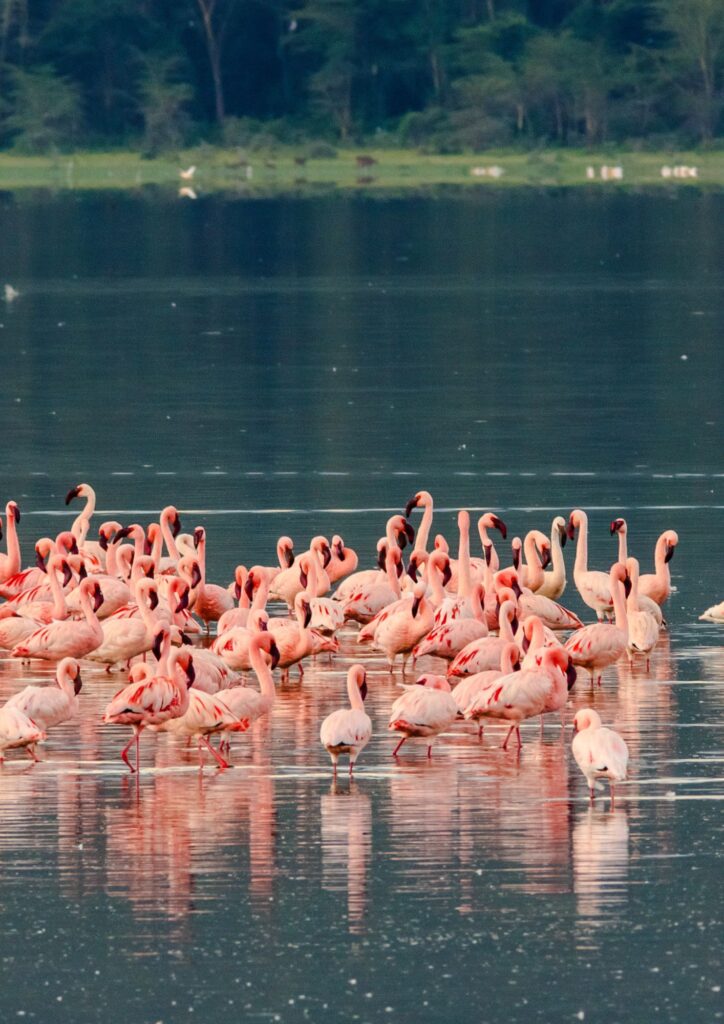
FAQ: Best National Parks and Game Reserves in Kenya
Kenya is home to some of the world’s most iconic wildlife destinations. From the rolling plains of the Masai Mara to the volcanic landscapes of Hell’s Gate, its national parks and game reserves offer unforgettable safari experiences. Whether you are a first-time visitor or a seasoned traveler, knowing the best national parks in Kenya and best game reserves in Kenya helps you plan an adventure that maximizes wildlife sightings, scenery, and cultural experiences.
For first-time safari-goers, the best national parks in Kenya include Nairobi National Park, Amboseli, and Lake Nakuru. Nairobi National Park is unique for being the only park bordering a capital city, making it highly accessible and ideal for a short, beginner-friendly safari. Amboseli offers sweeping views of Mount Kilimanjaro and large elephant herds, giving visitors a classic African safari experience. Lake Nakuru is famous for its flamingo population and diverse bird species, providing excellent wildlife viewing for beginners. These parks are well-equipped with visitor facilities, guided tours, and multiple accommodation options, making them perfect for those new to Kenya’s safari landscape.
For photography enthusiasts, the best game reserves in Kenya include Masai Mara, Samburu, and Buffalo Springs. Masai Mara offers vast savannahs, abundant predators, and the world-famous Great Migration, creating dynamic photographic opportunities throughout the year. Samburu and Buffalo Springs showcase unique northern wildlife species such as Grevy’s zebra, reticulated giraffe, and gerenuk, which are rarely seen elsewhere. The open landscapes, varied light conditions, and seasonal wildlife interactions in these reserves make capturing stunning safari shots easier. Whether you are a professional photographer or an avid hobbyist, these game reserves deliver unforgettable wildlife photography experiences.
Kenya is home to 23 national parks and 28 national reserves, along with several wildlife sanctuaries, making it one of Africa’s most wildlife-rich countries. Together, these areas safeguard over 8,000 species of plants and animals, from iconic mammals to rare birds and endemic reptiles. Choosing from the best national parks and game reserves in Kenya ensures travelers experience a wide range of ecosystems — from savannahs and volcanic craters to dense forests and freshwater lakes. This diversity makes Kenya a year-round safari destination that caters to different preferences, whether one is interested in Big Five spotting, birdwatching, or immersive cultural encounters with local communities.
The best time to visit national parks in Kenya is generally during the dry seasons, from June to September and January to February. During these months, wildlife congregates around rivers and waterholes, improving the chances of spotting elephants, lions, and other iconic species. While the wet season (March–May and October–December) brings heavy rains, it also transforms the parks into lush green landscapes with vibrant birdlife, blooming flowers, and spectacular photography opportunities. Early morning and late afternoon game drives are recommended throughout the year for optimal lighting, comfortable temperatures, and increased wildlife activity. Planning your visit based on the seasons helps ensure a richer, more rewarding safari experience.
Many travelers prefer game reserves in Kenya when seeking more private and exclusive safari experiences. Reserves like Samburu, Buffalo Springs, and Shaba allow guided walking safaris, intimate lodge stays, and off-the-beaten-path wildlife encounters that are often impossible in larger, busier national parks. National parks, in contrast, provide iconic landscapes, easier access, and well-maintained infrastructure for visitors, making them suitable for those prioritizing convenience and classic safari experiences. Combining visits to both national parks and game reserves gives travelers the perfect balance of privacy, adventure, and iconic wildlife sightings, ensuring a personalized safari tailored to individual preferences.
The best national parks in Kenya for spotting the Big Five — lions, leopards, elephants, rhinos, and buffalo — include Masai Mara, Amboseli, and Tsavo East & West. Masai Mara offers sprawling savannahs where lions and cheetahs hunt across open plains, while Amboseli provides dramatic views of Mount Kilimanjaro alongside large elephant herds. Tsavo East and West are vast wilderness areas, home to diverse predator populations and large buffalo herds roaming semi-arid landscapes. Hiring experienced guides and planning early morning or late afternoon game drives greatly improves your chances of witnessing these iconic animals in their natural habitats. For first-time visitors, focusing on these parks ensures an unforgettable Big Five safari experience.
Kenya’s coastal game reserves, such as Kisite-Mpunguti Marine National Park and Boni Forest, offer unique safari experiences combining terrestrial wildlife with marine ecosystems. These best game reserves in Kenya allow travelers to explore coral reefs, snorkel among tropical fish, and observe rare coastal and migratory bird species. Boni Forest, on the other hand, provides dense forest habitats that shelter elephants, duikers, and other rare wildlife, giving visitors a quiet and intimate nature experience. Coastal reserves also offer immersive cultural encounters with local communities, boat safaris, and eco-tourism opportunities, making them ideal for travelers seeking both adventure and relaxation. Visiting these areas expands the safari experience beyond traditional parks, showing the ecological diversity of Kenya.
Absolutely — a multi-park safari is the best way to experience Kenya’s rich biodiversity. Many tour operators design itineraries connecting the best national parks and game reserves in Kenya, enabling travelers to explore contrasting ecosystems — from the savannah plains of Masai Mara to the volcanic landscapes of Mount Longonot, and from the bird-rich lakes of the Rift Valley to coastal marine reserves. Combining multiple parks allows visitors to witness the Great Migration, Big Five sightings, rare species, and cultural experiences within a single journey. With careful planning, you can maximize wildlife encounters and photography opportunities while enjoying comfortable accommodations along the route. This approach ensures a more holistic and rewarding safari adventure.
Yes, Kenya offers several affordable safari options without compromising wildlife experiences. Parks like Nairobi National Park and reserves such as Mwea, Lake Bogoria, and Shimba Hills provide accessible and budget-conscious alternatives, with entry fees lower than more famous destinations. Choosing the best national parks and game reserves in Kenya on a budget can include staying in community lodges, camping areas, or nearby towns while still enjoying expert-guided game drives. At Sparwild African Tours & Safaris, we specialize in creating tailored itineraries that combine top wildlife experiences with cost-effective accommodation, transport, and guided tours. Our goal is to ensure that every traveler experiences Kenya’s wildlife wonders without exceeding their budget.
Selecting between a national park and a game reserve depends on your priorities, such as accessibility, wildlife diversity, and the type of safari experience you desire. The best national parks in Kenya offer iconic landscapes, well-maintained infrastructure, and reliable Big Five sightings, making them ideal for first-time visitors or those seeking classic safari experiences. In contrast, the best game reserves in Kenya provide more intimate encounters, off-the-beaten-path adventures, and cultural interactions with local communities, often with fewer crowds. At Sparwild African Tours & Safaris, our experienced guides help craft personalized itineraries tailored to your preferences, combining comfort, safety, and unique wildlife experiences. This ensures every safari delivers the very best Kenya has to offer while highlighting the distinct advantages of both parks and reserves.
Explore Kenya’s Best National Parks and Game Reserves with Sparwild African Tours & Safaris
Don’t just dream about Africa’s wildlife — experience it firsthand. With Sparwild African Tours & Safaris, you can design a personalized safari visiting Kenya’s top national parks and game reserves for unforgettable wildlife encounters. Our expert guides ensure seamless logistics, insider knowledge, and access to both iconic and hidden destinations. Contact us today to book the best safari package or itinerary tailored to your interests, whether it’s spotting the Big Five, witnessing the Great Migration, or exploring coastal reserves. Let us turn Kenya’s breathtaking landscapes into memories that last a lifetime.

